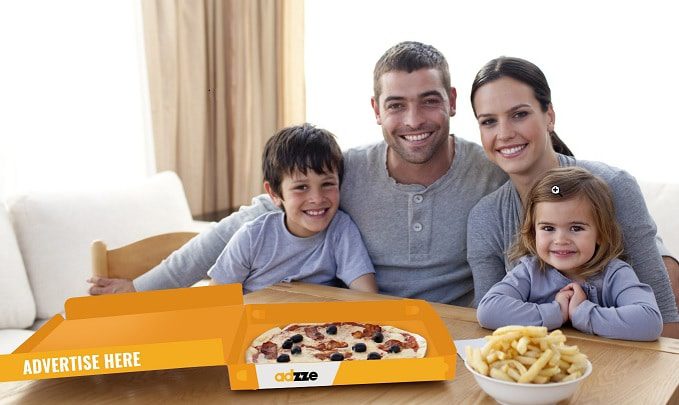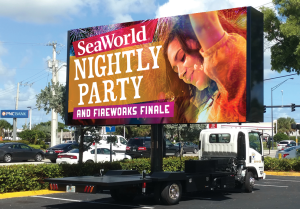In today’s noisy advertising world, brands are in a constant battle for attention. From digital billboards to social media pop-ups, consumers are bombarded with messages every second. But there’s a psychological marketing tool many advertisers overlook—tactile advertising. And one of the most underutilized in this space? The innovative pizza boxes.
When used strategically, pizza box ads deliver a rare combination of high dwell time, physical interaction, and contextual relevance. This blog explores the behavioral impact of in-hand media, specifically pizza box advertising, and how it can be the secret ingredient for building brand recall.
Why the Innovative Pizza Boxes Are More Than Just Packaging
Forget plain cardboard and grease stains—the innovative pizza boxes are now doubling as advertising space, loyalty tools, and brand activators. But what makes these boxes so effective is not just their design—it’s how they engage the senses.
Psychologists have long understood that touch creates memory. Known as the “endowment effect,” when people physically interact with an object, their emotional connection to it increases. And when the object is tied to a comforting ritual—like opening a pizza box at home—the effect becomes even more powerful.
So when brands tap into pizza box ads, they’re not just buying impressions—they’re embedding themselves in dinner-time moments, family rituals, and emotional experiences.
From Passive Viewing to Active Holding: The Psychology Behind Pizza Box Ads
Let’s compare the typical digital ad experience versus pizza box advertising:
Ad Format |
Viewer Interaction |
Dwell Time |
Sensory Input |
Recall |
Instagram Story |
Passive swipe |
1–3 seconds |
Visual only |
Low |
TV Ad |
Background noise |
5–30 seconds |
Visual + sound |
Medium |
Pizza Box Ad |
Actively held and seen multiple times |
20–40 minutes |
Touch + smell + visual |
High |
When you deliver a pizza box ad, the customer physically holds the message—they feel the texture, see the design, and revisit it repeatedly while eating. This combination of repetition and sensory layering leads to stronger encoding in memory.
And unlike fleeting digital impressions, pizza boxes ads stick around—often on the counter or in the trash hours or even days later, serving as a delayed touchpoint.
The Innovative Pizza Boxes as Hyperlocal Ad Vehicles
What makes the innovative pizza boxes a dream for advertisers is not just their tactile impact—but their precision delivery.
With digital ads, brands often target wide audiences and rely on algorithms to optimize reach. But with pizza box advertising, brands can choose specific ZIP codes, neighborhoods, or even pizzerias, ensuring every ad lands directly in the homes of a curated local audience.
This makes pizza box ads ideal for:
Local service providers (dentists, lawyers, HVAC, insurance agents)
Community event organizers
Educational institutions or tutors
Retailers with nearby storefronts
You’re not interrupting someone’s scroll—you’re integrating into their daily lives.
The Role of QR Codes and CTAs in Pizza Box Advertising
Let’s get practical. You’ve got their attention, and they’re physically holding your ad. Now what?
The smartest pizza box advertising campaigns integrate QR codes, discount offers, and clear CTAs. Some examples:
“Scan to win free garlic knots!”
“15% off your next online order—just scan here.”
“Need insurance? Get a quote while your pizza bakes.”
These activations take the ad from static to interactive. And because the user is already settled in their home or office, they’re more likely to follow through—not just scroll past.
Real-World Campaign Success with Pizza Boxes Ads
Let’s consider a few success scenarios (inspired by Adzze’s media placements):
A local law firm advertised on pizza boxes in family neighborhoods. Within 3 weeks, they saw a 19% increase in website visits and booked 12 consultations from QR scans alone.
A university used pizza box ads to promote their evening MBA program in off-campus housing zones. Result? A 24% increase in program interest form submissions.
A gym chain offered a free 7-day pass on every pizza box delivered within 5 miles of their location. New sign-ups spiked 17% in just one month.
These are not hypothetical impressions—these are actionable engagements that resulted in real leads, conversions, and ROI.
Why Brands Trust the Innovative Pizza Boxes Over Digital Impressions
Let’s address the elephant in the room—digital fatigue.
Consumers are tuning out banner ads, skipping pre-roll videos, and growing numb to branded content in feeds. That’s why physical advertising is making a comeback—especially when it’s clever, contextual, and creative, like pizza box ads.
Benefits include:
100% share of voice (no ad clutter or competition on the same surface)
Exclusivity (only one ad per box = total attention)
Trackability (QR scans, redemption codes)
Low CPMs compared to traditional OOH or paid social
Plus, the message lands in the perfect environment: a relaxed home, during meals, often shared with others—prime time for brand reinforcement.
Pizza Box Advertising Is Scalable and Sustainable
Don’t be fooled—this isn’t just for mom-and-pop pizzerias. National brands are now exploring scalable pizza box ad campaigns across regional chains or delivery aggregators.
And as eco-friendly printing evolves, advertisers can now print on boxes using biodegradable inks, soy-based dyes, and recyclable packaging, keeping the campaigns sustainable and brand-safe.
At the same time, local advertisers can customize by neighborhood, language, or demographic to keep messaging personalized and relevant.
Final Takeaway: It’s Time to Get in Their Hands—Not Just on Their Screens
If you want real engagement in today’s distracted world, you can’t just flash your brand across another screen.
You need to enter your audience’s environment, sit down at the table with them, and be part of a meaningful moment.
The innovative pizza boxes offer a direct line to that opportunity—through touch, timing, and trust.






